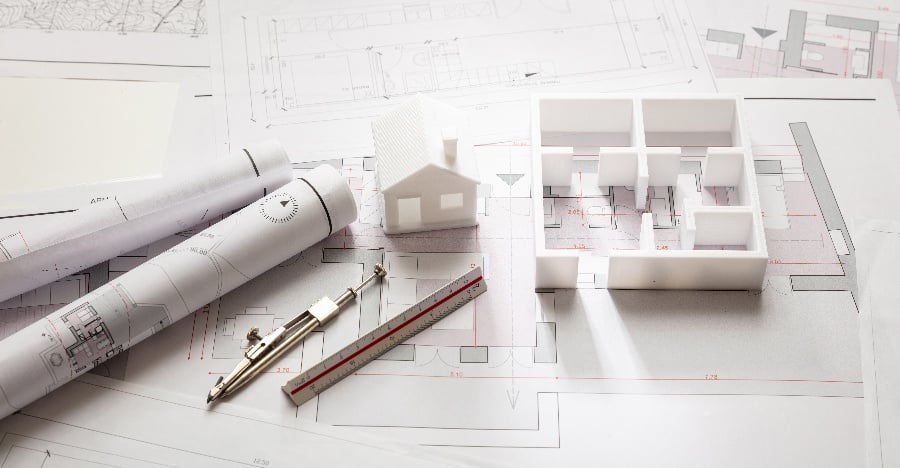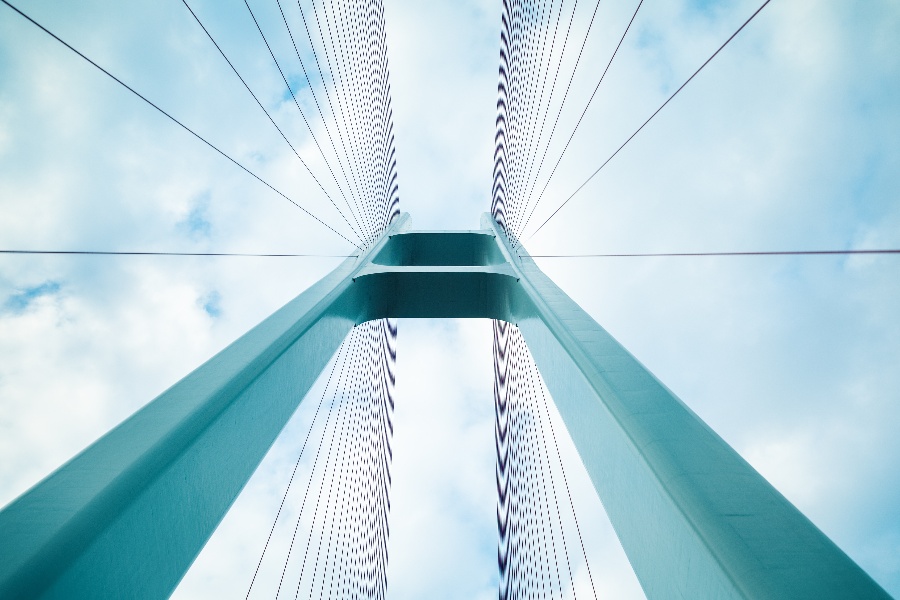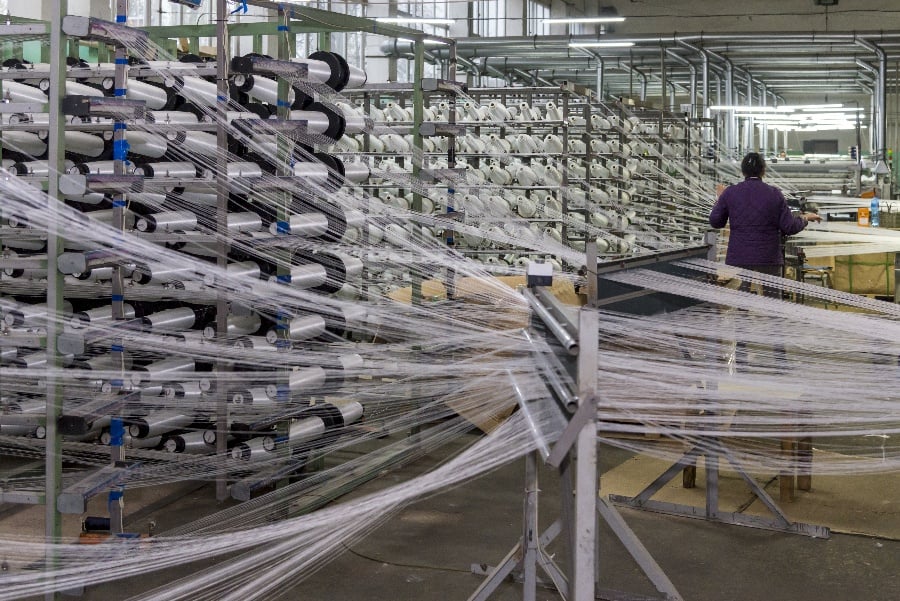
In civil engineering projects such as transportation and public works, every ounce counts. For this reason, composites are becoming increasingly popular materials in civil projects.
With civil engineering construction spending as much as $331.1 billion in 2019, it becomes even more critical to select materials that are durable, lightweight and cost-efficient.
When considering materials to use in engineering projects that meet all the criteria, fiber-reinforced plastics (FRPs) become increasingly ideal.
This post will highlight the benefits of FRPs in civil engineering projects.
Lightweight Construction Materials
Pultruded fiberglass is extremely lightweight, coming in at about 30% lighter than aluminum and 70% lighter than steel.
When working on projects that rely on material efficiency and careful calculation, such as bridges and railways, civil engineers need to trust that the materials they’re using will not cause additional drag and weight.
Because of their lower weight, pultruded FRP parts are not only ideal for use in construction projects that are meant to last for years, but become more cost-efficient during the construction process.
They are easier to transport than heavyweight metals, reducing freight costs creating the potential to reduce lead times.
In addition to structural supports in rail and bridge engineering projects, pultrusion can be used in a variety of applications, including the manufacture of pipe and electrical supports, roll-up door panels, and window reinforcements.
Construction supports and scaffolding can also be constructed from pultruded fiberglass and reinforced plastics, keeping the full construction process in a single house and streamline supply chains rather than forcing engineers to shop for multiple suppliers.
FRPs Offer Strength Benefits
While FRPs are lighter than steel and aluminum, they do not compromise strength. They won’t rot or rust, which is ideal compared to wood, aluminum, and steel parts that will eventually give way to the elements.
In fact, pultruded rods have a tensile strength of 414-827 MPa, while the typical tensile strength of structural steel is only about 400 MPa.
Reinforced plastics are also able to withstand greater vibrations than metal, making them ideal for rail, road, and bridge construction applications.
Because they’re corrosion-resistant, electromagnetically neutral, and non-conductive, pultruded FRP parts can be more reliably trusted for longer periods of time in engineering projects.
Maintenance also becomes simpler over long periods of time. The manufacturing process also offers additional flexibility over steel.
Pultrusion can be used to manufacture a variety of custom shapes and products of varying thicknesses with minimal change to the process, while steel smelting requires intense heat and labor.
Custom-forged steel parts can be extremely expensive and labor-intensive, while custom dyes for pultrusion are relatively quick and simple to implement.
Because of these strength benefits, numerous public works projects and civil engineering endeavors are already leveraging pultruded products in construction.
For example, the Ohio Department of Transportation (ODOT) has recently passed a steel replacement scheme for the Anthony Wayne Trail Bridge in Toledo that has fiberglass components substituting steel.
In addition, new construction of the Halls River Bridge in Florida was specifically launched to demonstrate the reliability and benefits of composite materials, including pultruded FRP rebar in the deck, barriers, approach slabs, and parts of the substructure and sheet pile walls.
Safety and Durability of FRPs
Because they do not conduct heat or electricity, FRPs are extremely safe compared to steel and aluminum when placed under stressful circumstances, such as repeated friction, continual wear, or fires.
In a parametric study of load allowance on bridges constructed with pultruded FRPs, it was found that bridges between 10 to 20 meters in length constructed with FRP materials manufactured through pultrusion could withstand higher dynamic load allowances than bridges constructed with 100% composite or non-composite materials.
This indicates that FRPs are a great enhancement to established construction techniques for public works projects such as roads and bridges.
Another study revealed that glass fiber reinforced plastic (GFRP) rebar has the potential to maintain its microstructural integrity and mechanical properties for longer than 15 years.
When compared to steel rebar, which is heavier-weight and prone to corrosion, it’s ideal to use a material that’s going to improve the lifespan of an engineering project.
When you consider that there are 54,000 structurally deficient bridges in the United States highway system (and the number is only increasing), it’s critical to consider lifespan improvements for public safety and the conservation of taxpayer dollars.
Components that Can Be Manufactured from FRPs
A surprising number of parts for civil engineering purposes can be manufactured using pultrusion. Pultruded fiberglass angles are ideal for infrastructure such as bridge components, guardrails, and railway-crossing arms because they can be manufactured consistently and precisely.
Pultruded fiberglass channels have similar applications, and can also be used in utility and telecom projects as line markers, cross arms, and utility poles.
Components of various shapes, sizes and characteristics can be created by using a range of reinforcing fibers and formats, such as glass or carbon fiber and thermoset matrix resins (e.g., polyester, vinylester, epoxy, phenolic, polyurethane, and thermoplastic resins.)
In addition, pigments can be added during the manufacturing process to create fiberglass profiles of any color. This reduces the time and cost to market.
Surfacing veils can also be used to create appearances such as wood grain, marble, and granite to meet different design needs.
One of the key benefits of pultrusion is the ability to manufacture completely custom parts for very specific needs. Even more standard parts and shapes can be customized and enhanced with dyes, UV resistance, advanced fire retardant, strength enhancements, and additional specialty resin products.
As cities and counties roll out projects such as road improvements, new bridge construction, light-rail implementation, and fiber optic cable networks, pultrusion can be leveraged in every stage of construction and implementation.
Starting down at foundational support to replace steel rebar, continuing as electrical and thermal insulation, and concluding with UV-resistant, colorful finishings for bridges and windows, FRPs offer a versatile alternative to more traditional construction alternatives.
In addition to offering the best possible solutions for civil engineers, Tencom aims to offer the best possible service and information to each of our customers based on unique needs.
While every company makes this claim, Tencom has the product portfolio and existing customer relationships to back it up.
If you have additional questions about the capabilities of pultruded FRPs for civil engineering implementations or would like a quote for an upcoming project, contact us today.















